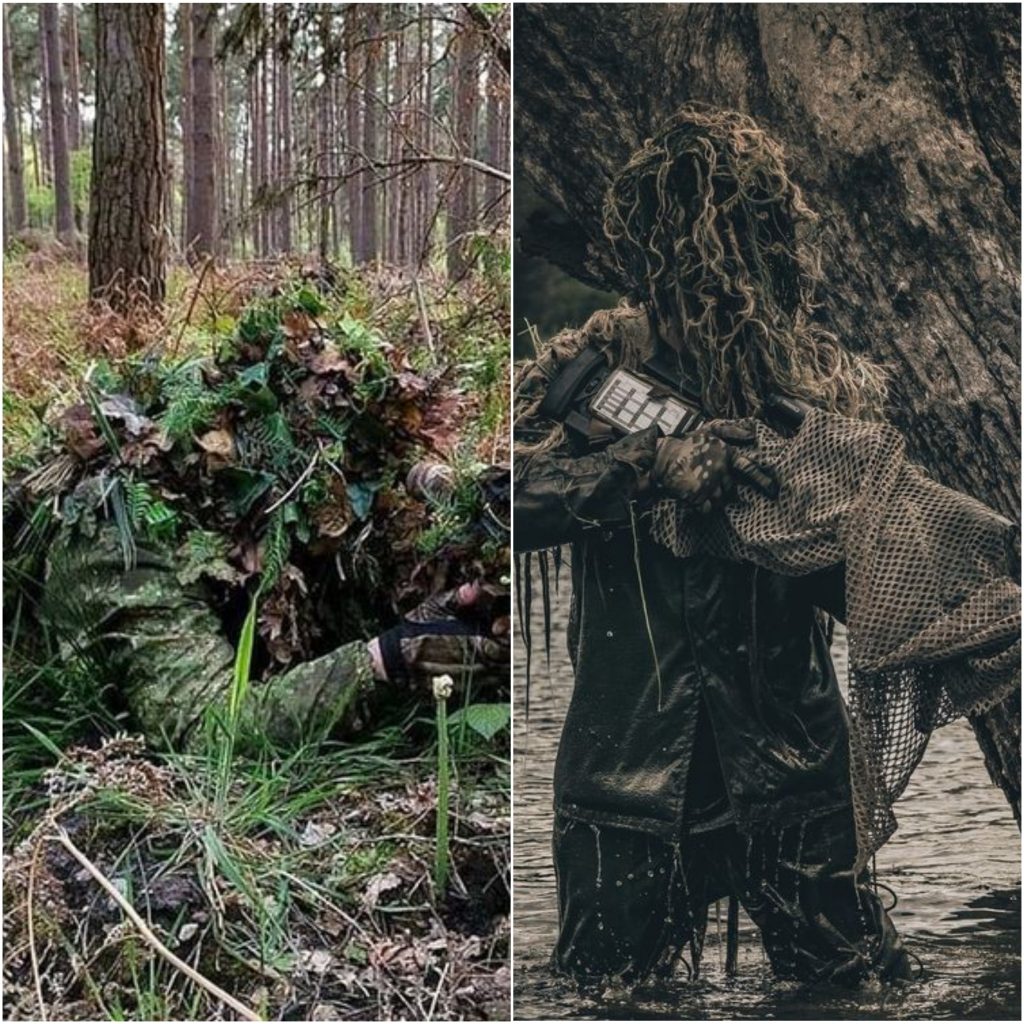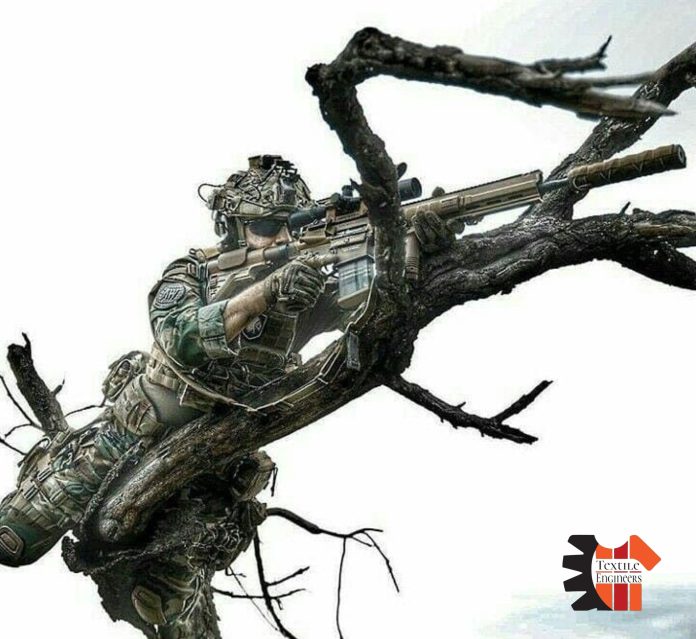Fashion has always walked the narrow line between mere aesthetic referencing and seditious maneuvering in its misappropriation of military uniforms. To date, fashion’s use of camouflage has been one the most far-reaching and successful endeavors in converting a military device into a civilian tool.
The term camouflage derives from the French word camouflage, meaning “to disguise.” It entered the English language during World War I when the French first adopted it as an innovative military technique. In 1914, the portrait painter Guirand de Scévola proposed hiding shiny artillery behind paint and fabric
De Scévola was quoted as saying,
“In order to totally deform objects, I employed the means Cubists used to represent them – later this permitted me, without giving reason, to hire in my [camouflage] section some painters,
who, because of their very special vision,
had an aptitude for denaturing any kind of form whatsoever.”
Camouflage fabric is a specialized textile designed with patterns that mimic the surrounding environment, making objects or individuals wearing the fabric difficult to perceive. The primary purpose of camouflage fabric is to provide concealment, whether in military applications, hunting, or even fashion.

HISTORY of CAMOUFLAGE (DATE-BY-DATE)
Ship camouflage was occasionally used in ancient times before the 1800s. The development of military camouflage was driven by the increasing range and accuracy of infantry riflemen in the 19th century.
- 1914-1918: World War I
• 1914: The term “camouflage” is introduced during World War I, stemming from the French word “camoufleur,” meaning “to disguise.”
• 1914-1918: Artists and military strategists, including Guirand de Scévola, experiment with camouflage techniques to hide soldiers and equipment on the battlefield. - Between the Wars (1919-1939):
• 1920s-1930s: Further experimentation and development of camouflage techniques continue in various military forces.
• 1930s: Camouflage fabric starts to appear in military uniforms and equipment. - World War II (1939-1945):
• 1939-1945: Camouflage fabric becomes a standard feature in military uniforms across various theaters of war during World War II. - Post-World War II (1946-1959):
• 1940s-1950s: Surplus military gear, including clothing with camouflage patterns, becomes available to civilians, leading to the adoption of military-style clothing in certain subcultures.
• 1950s: Camouflage fabric is associated with hunting and outdoor activities, gaining popularity in civilian contexts. - Vietnam War Era (1960s-1970s):
• 1960s-1970s: Camouflage becomes an iconic symbol of the Vietnam War era. Military uniforms featuring disruptive patterns become emblematic of the time.
• 1960s-1970s: Camouflage fabric is embraced by counter-culture movements, contributing to its popularity in civilian fashion. - Late 20th Century (1980s-1990s):
• 1980s-1990s: High-end fashion designers begin incorporating camouflage into their collections, transforming military patterns into symbols of style and luxury.
• 1980s-1990s: Streetwear adopts camouflage as a staple, contributing to its integration into mainstream fashion. - 21st Century (2000s-Present):
• 2000s-Present: Camouflage fabric continues to be a prominent feature in fashion, with designers and brands innovating with patterns, materials, and applications.
• 2000s-Present: Technological advances in textile manufacturing result in camouflage fabrics with enhanced features such as moisture-wicking, breathability, and durability.
Throughout the Years Camouflage fabric becomes a symbol of toughness, adventure, and rebellion. It is widely associated with both military identity and civilian subcultures. - WHAT CAMOUFLAGE ACTUALLY IS?:
“God is camouflage.” Fashion designer Claude Sabbah’s statement implies that camouflage, both as a concept and a pattern, is omnipotent and omnipresent. How could a simple textile pattern ever be compared with God? If Sabbah’s opinion is correct, how did camouflage achieve such power?
To be continued..
Writer Information:
Nabil Hassan
TES General Member (NITER)


